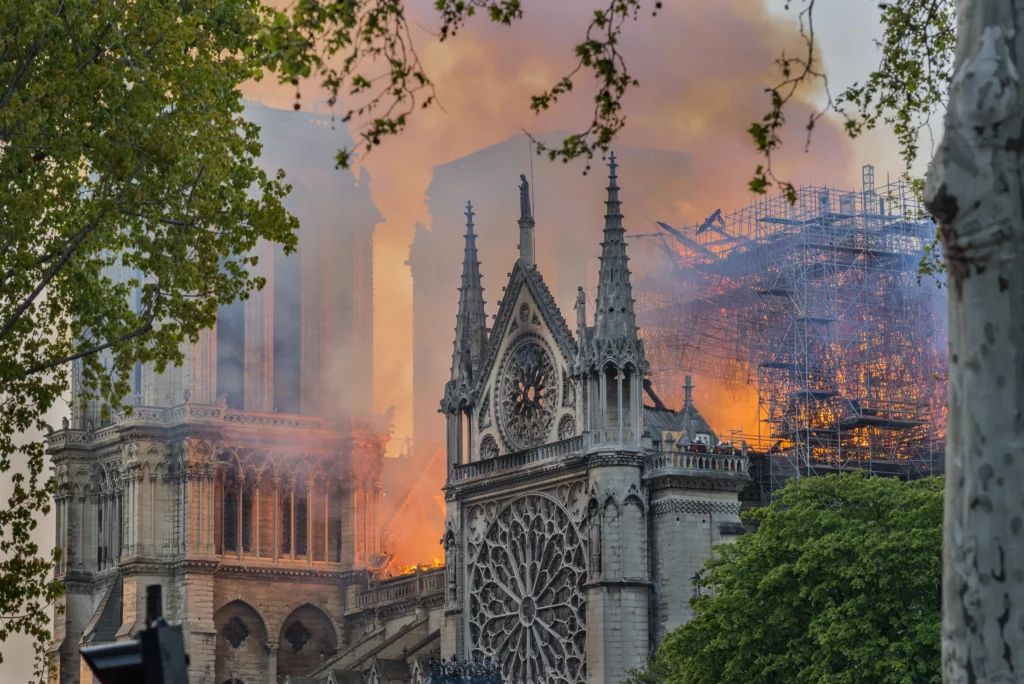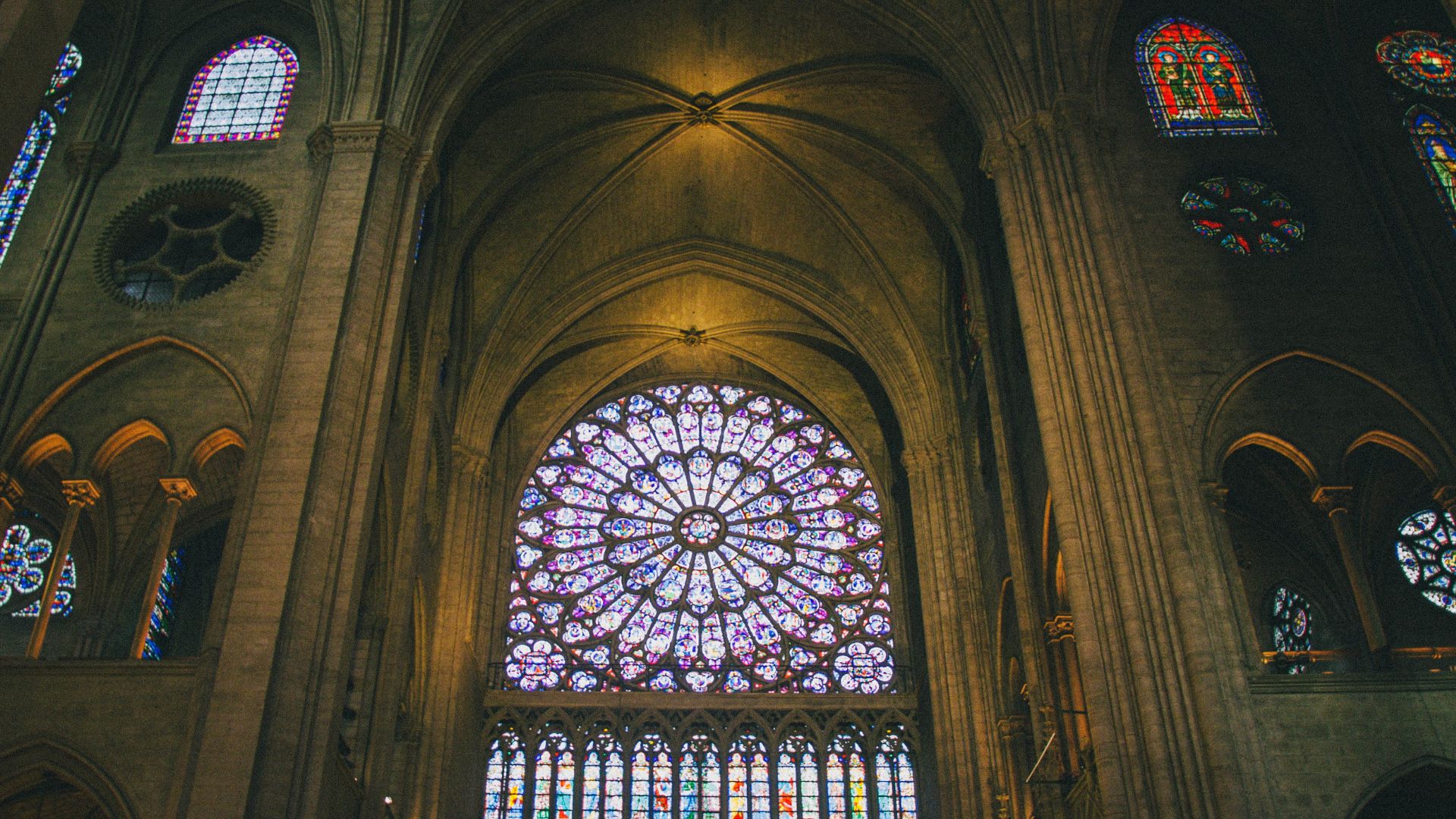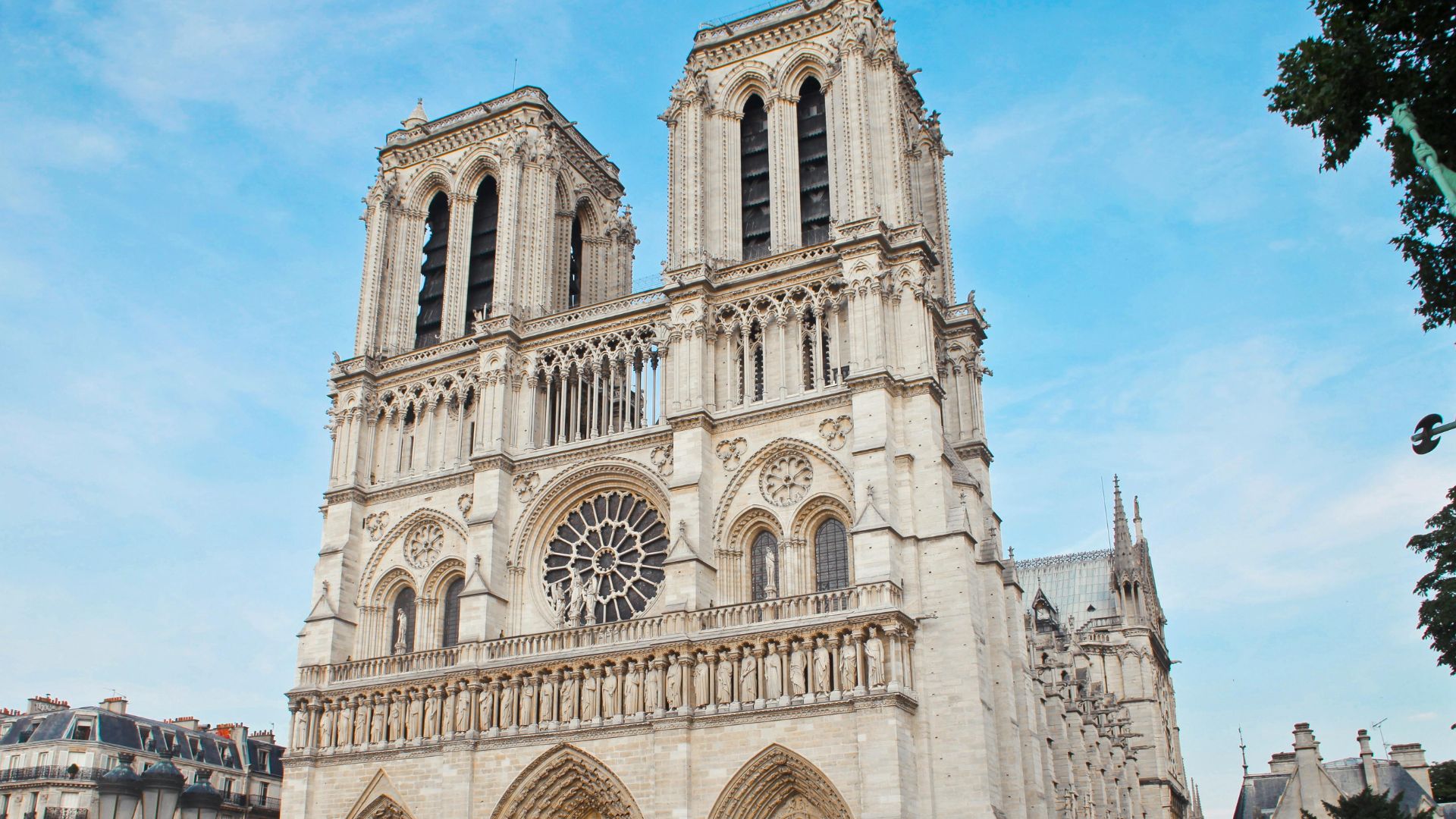1163 AD, Paris begins construction of a new cathedral on the site of a 4th Century Cathedral of Saint Etienne on the bank of the river Seine.
Steeped in history and the symbol of national pride, Notre-Dame de Paris is held the place of countless iconic moments from the coronation of Napoleon to liberated Parisians serenading the cathedral during celebrations, as the country broke from German occupation in 1944.
On 15th April 2019, the world stood and watched as fire engulfed the beloved Notre Dame de Paris. By the time the devastating fire was extinguished, the spire had collapsed, most of the roof had been completely destroyed and its upper walls were severely damaged. Many works of art and religious relics were moved to safety, but some suffered damage whilst much of the exterior art was completely destroyed. Here’s how it happened:
For the next 2 hours and 45 minutes, over 500 firefighters battled to save the beloved cathedral.
Amazingly, firefighters managed to save the main structure, as well as the façade, both towers, walls, buttresses and the stained glass windows.
The cathedral is set to reopen in December 2024 with French President Emmanual Macron promising to restore the cathedral within 5 years. Although it is suggested that it may take anywhere from 10 to 40 years to completely restore. The building may be reconstructed by the immense historic and cultural impact the ancient roof and spire had, may never be reclaimed.
One of the most visited tourist destinations in the world with an estimated 13 million yearly visitors – an average of 30,000 people every day. The fire that engulfed the landmark brought not just a huge material loss but had a devastating impact on the tourism industry in France. It is estimated a massive €180,000 is still being lost daily in revenue.

The fire at Notre Dame de Paris, and similar disasters at Windsor Castle in 1992 and Clandon Park in 2015 bring into stark focus the difficulties custodians of historic sites face in keeping their premises safe. Wireless fire safety systems and intelligent remote monitoring could hold the key to protecting these premises for future generations to enjoy. While it’s true that Notre-Dame de Paris had fire alarms installed. They were archaic and not technologically advanced enough to cope with the speed and ferocity of fire. The systems notified employees, but had the cathedral been fitted with modern wireless fire systems and intelligent remote monitoring then firefighters would have been notified the second the blaze broke out. Saving the church from devastation. Moreso, wireless fire systems and intelligent remote monitoring would have notified authorities the exact room where the incident occurred, rather than employees sending guards to the wrong place.
Wired fire alarms come with unique limitations that make them not suitable for historic sites like Notre-Dame cathedral, and indeed other heritage sites closer to home. Installation can damage the façade with holes having to be drilled into 12th century wood beams and stone. It could leave wiring and trunking exposed for visitors to see, running the aesthetic of heritage sites. Upgrades are inevitable over time, and wireless systems can be systematically upgraded with new technology with no building work needed.
It’s a no-brainer, the introduction of adequate fire protection and intelligent remote monitoring is critical. When it comes to sites of national importance, like the Notre Dame is to Paris and France, the stakes are much higher. We cannot allow for aging fire and security systems to risk our historic sites. Wireless fire systems is just one example of utilising modern technology to solve a timeless problem. We have incredible tools on our side now, using them balances the scales and gives us the ability to protect our much loves assets from devastation.
Graham White - Managing Director, Your Choice Fire & Security
Heritage, historic and listed buildings can face several unique challenges to remain compliant whilst acknowledging the unique pressures on the site managers. It can be incredibly challenging to install fire safety systems when the site is:
Based around a number of detached buildings on a single site that must be interlinked
Listed – with complex rules to navigate surrounding work.
Aesthetically important – when hiding cables is not desirable.
Heavily constructed from wood/other materials that are highly flammable
Downtime for heritage sites are inconvenient for employees, custodians, and visitors. Wired systems can take days to install depending on the size of the premises. The average entry fee to a National Trust property is £10 – with more than 500 sites in the UK – even a short-term closure for any venue could have serious economic impact. Wireless systems can be added to protect the building within hours, quietly and discreetly. Given that Notre-Dame is to be closed for over 5 years, custodians would have avoided this with the application of appropriate modern fire prevention systems.
Wireless fire system operate on batteries, meaning should there be a power cut the system still remains active. Similarly, should one asset go offline, this does not create a circuit breaker and the rest of the system will remain online and active. Meaning heritage sites are protected 24/7.
On larger sites with a range of separate buildings, a wireless system can be massively effective in giving a real-time picture of the full site. With no lag, and an instant notification in the event of a fire breaking out, wireless systems give the chance for you to react instantly, to prevent the fire from spreading, to evacuate the premises in a timely fashion, and to take measures to limit the impact of any damage should the worst happen.
Fires are always unpredictable and should never be underestimated. Doing the bare minimum when it comes to fire safety is not only a risk to staff and visitors but also an economic risk. By choosing a Wireless Fire Alarm System you are actively protecting yourself and your irreplaceable site of national importance. Prevention is always better than cure, so don’t wait until you must react – ensure your system is compliant and fully fits with the challenging needs of your site.





To provide the best experiences, we use technologies like cookies to store and/or access device information. Consenting to these technologies will allow us to process data such as browsing behaviour or unique IDs on this site. Not consenting or withdrawing consent, may adversely affect certain features and functions.